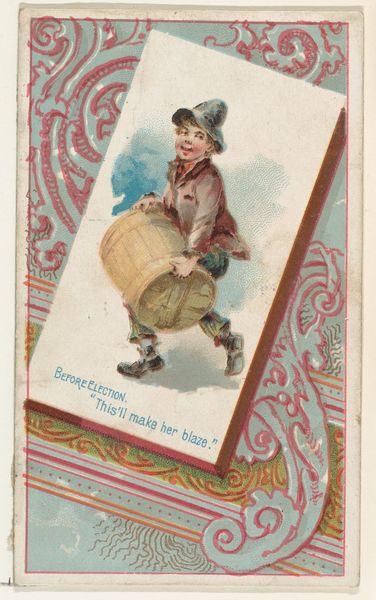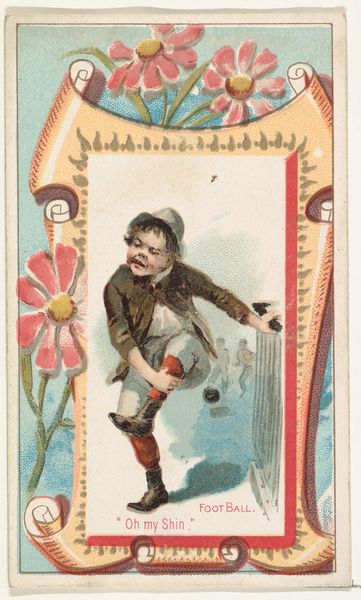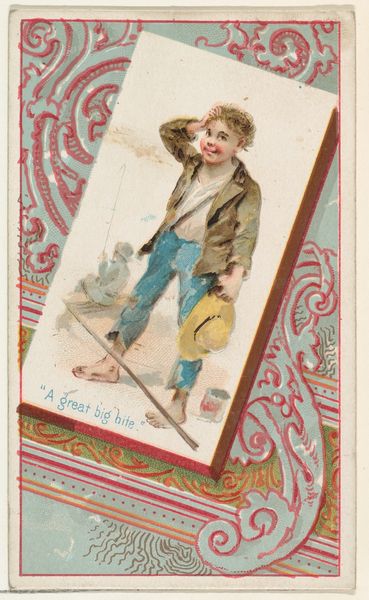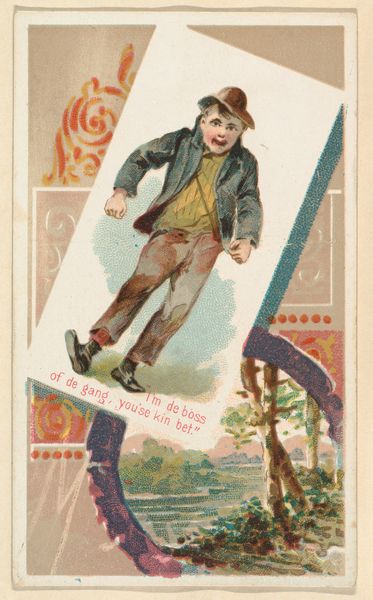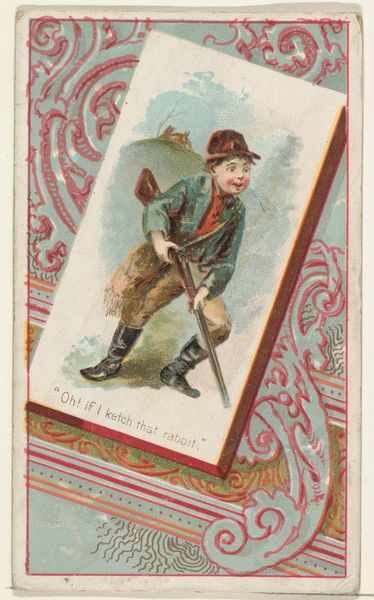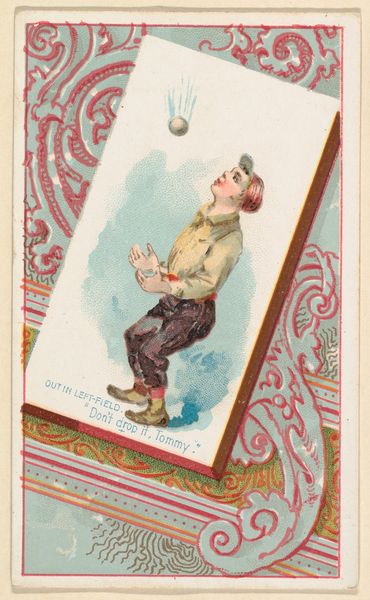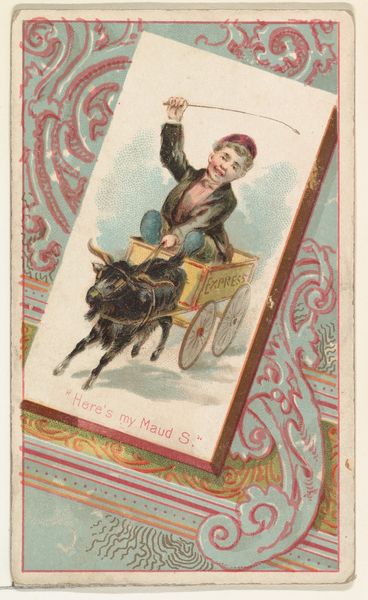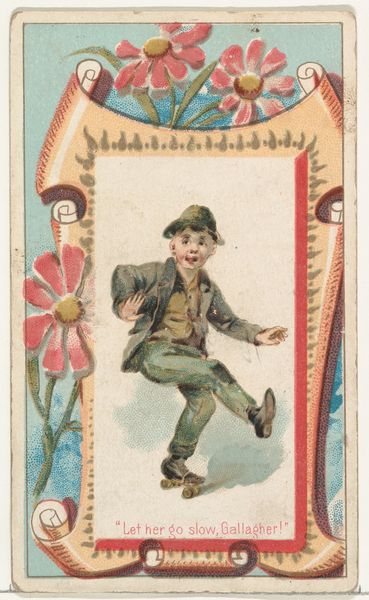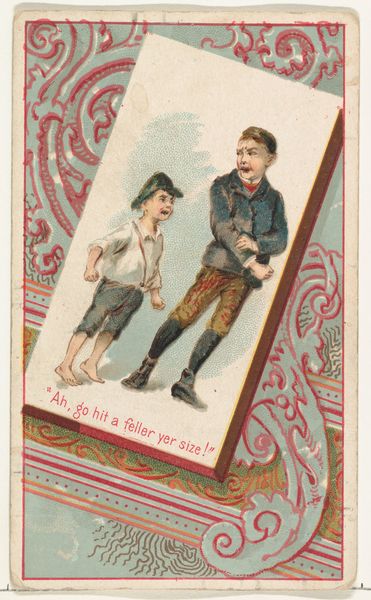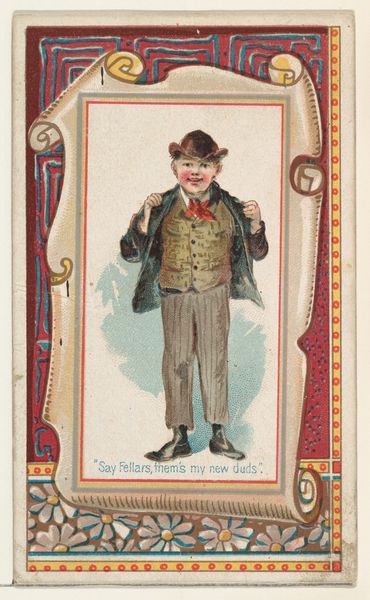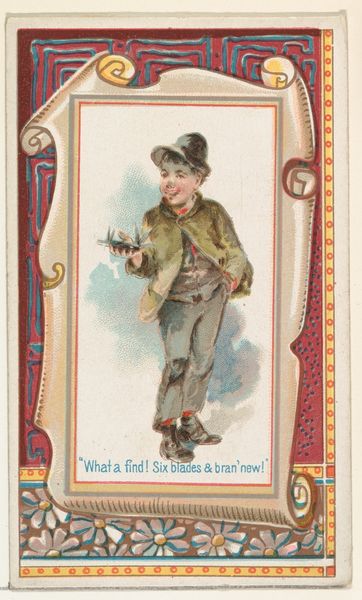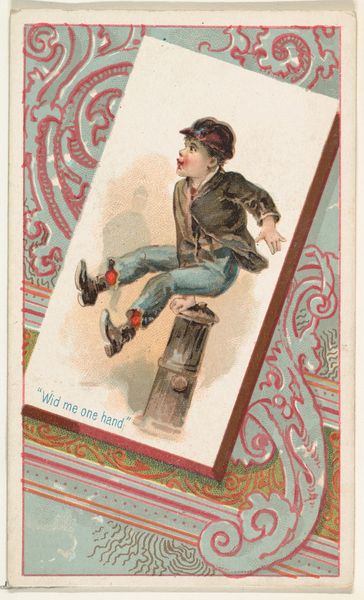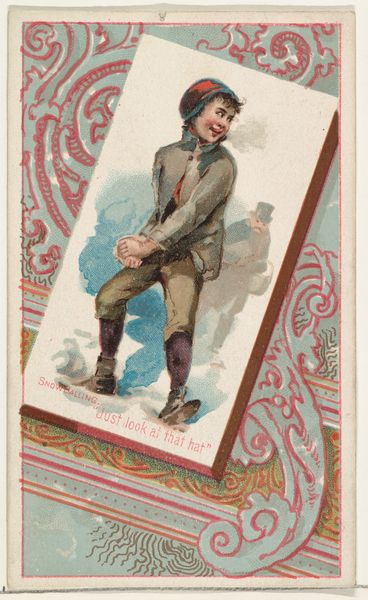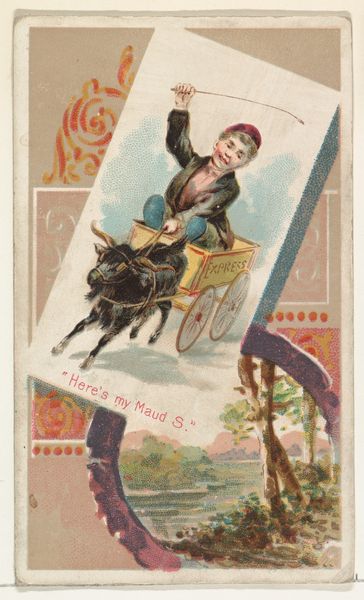
"I'm de boss of de gang, you'se kin bet," from the Terrors of America set (N136) issued by Duke Sons & Co. to promote Honest Long Cut Tobacco 1888 - 1889
0:00
0:00
drawing, print, watercolor
#
portrait
#
drawing
# print
#
impressionism
#
caricature
#
watercolor
#
watercolour illustration
Dimensions: Sheet: 2 3/4 x 1 1/2 in. (7 x 3.8 cm)
Copyright: Public Domain
Curator: This is "I'm de boss of de gang, you'se kin bet," a promotional card for Honest Long Cut Tobacco created by W. Duke, Sons & Co. between 1888 and 1889. It’s currently held at the Metropolitan Museum of Art. Editor: My initial reaction is surprise! There's a certain exuberance to the character; a swagger rendered with quite dynamic line work. But that confidence seems immediately undercut by what seems like...caricature? Curator: Precisely. Let’s break down the composition. The central figure dominates, presented in a somewhat tilted perspective, enhancing that sense of movement you identified. The diagonal thrust lends a certain dynamism. Observe the watercolour technique, particularly the washes of colour that give depth to the figure's clothing. Editor: Right. But what is that figure meant to convey? The title alone gives pause. Who would this appeal to and why? The dialect feels pointed, the visual representation similarly loaded...It invites questions about representation and cultural stereotyping in advertising. Curator: Context is key here. These cards were included in tobacco products to boost sales. They often depicted popular figures or, as we see here, romanticized, often exaggerated, scenes of everyday life. It is not beyond the pale to suggest these might have aimed to create a connection with working-class consumers, presenting a version of aspiration through familiar, if stereotypical, characters. Editor: I read this so differently. Look at how language is used, then juxtapose it to the image. It’s hard to ignore the implicit power dynamics at play and who the target consumer likely was, set against the backdrop of the Jim Crow South. We need to critically examine this image with sensitivity to race, class, and the pervasive cultural norms of that time. Curator: Certainly, the cultural context is vital to any reading of the work. Though, for me, a pure aesthetic appreciation isn't negated by that; line, form and even colour still yield information. Editor: Indeed. What we can agree on is the vital necessity for these works to spark meaningful, informed dialogues today, in light of their historical origins. Curator: Absolutely. It forces us to confront difficult aspects of our shared history.
Comments
No comments
Be the first to comment and join the conversation on the ultimate creative platform.
